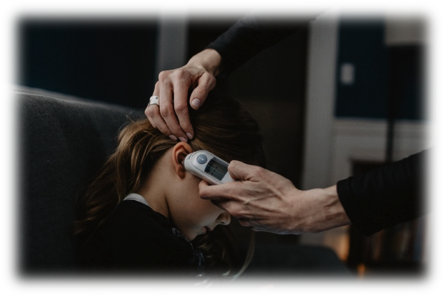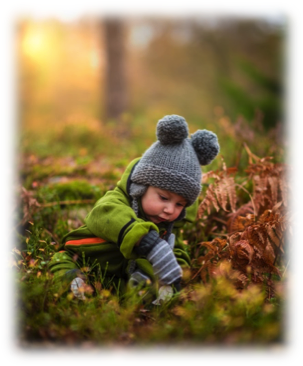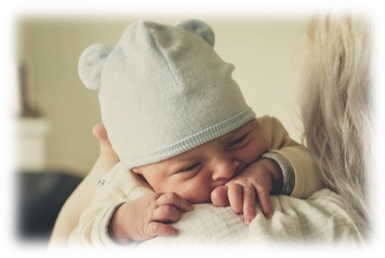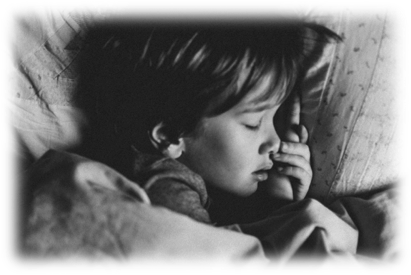
Dear children and parents,
How have you been? I hope you have enjoyed the glorious weather these days.
This week I wanted to talk about a subject that it is quite common in childhood:Fever.
There is a lot to talk about and I am going to start with something that I think is crucial: Prevention.
How can we prevent a child from being ill? Or in other words, how can we support a child’s health so their immune system gets strengthened and they can be at their best to fight illness?
As prevention is a vast area, let’s break it down in three aspects: Toxicity, Rhythm, Warmth.
Toxicity
The mayority of babies are born healthy and strong to live on this planet. Their bodies have the capacity to heal themselves. The less toxicity the bodies hold, the better the organs will function. We need to keep their bodies clean and nourished.
Imagine a car for a second. The owner wash it from time to time and takes it to the garage for check-ups. The mechanic makes sure all parts functions properly because if one part gets dirty and stuck it might affect the rest of the system and the car will not function. The owner will also put in the right fuel (nourishment) or otherwise the car will not work.
It is vital we keep our bodies clean, especially as adults, as we have accumulated toxicity for many years. In order to do this, we have to take care of our bodies from childhood. How can we do this?
We can avoid or minimize the levels of toxicity in our children’s bodies through:
- Food: Organic and biodynamic food has fewer pesticides and preservatives that non-organic food.
- Water: Filtered water, distilled water or water from a well contain fewer chemicals than tap water.
- Soap: All our household products and toiletries contain chemicals. Using ecological products is a way of reducing these.
- Medicines: Since birth some children are exposed to vaccines and medicines which, even if necessary, hold high levels of toxicity.
- Clothes: New clothes contain plenty of chemicals that our skin might absorve. Second-hand clothes or organic clothes may often be gentler on your skin.

- Environment: In urban centres the air holds plenty of pollution. Fresh air in nature helps the body to clean itself.
- Non-natural materials: Products and toys made of plastic are normally overstimulating and may not support the children’s sensorial development in the best way.
- Media: Little ones are very sensitive and impressionable. Contact with the natural supports an interaction with that which is real. We could delay exposure to media until the child is old enough to know the difference between reality and fiction.
- Emotional environment: Our thoughts and feelings can be healing or can make us ill. The little ones need an environment with plenty of love and care. Negative emotions and violence affect them emotionally and physically.
We as parents and carers are always trying to give the best we can to our children. However, once we are aware of the toxicity in our surroundings we can make positive changes.
Rhythm
I have talked before about the importance of rhythm. Rhythm is the “ruler” of our bodies. Imagine for a second that your heart changes its rhythm every hour, your blood pressure changes every five minutes, you have to sleep at random times every day or that you eat at night instead of during the day…..it would be a disaster and you would probably be ill soon.
As carers it is our duty to protect the natural rhythm of the babies and help them develop a healthy rhythm around sleep and food. When a baby is ill it needs plenty of sleep and probably less food so the body is entirely focused on healing itself.
The first seven years of a child are also called the Formative Years because it is when the organs of the body are forming. During these years the children’s bodies develop and grow in a way that will determine the adult’s health in the future. The bones grow, the heart grows, the liver, the brain, the lungs…If we love our children, we give them good food, plenty of nature and strong rhythms, all their energy will be free to sustain this growth and the organs will grow in the right way, without been affected. This means they have more possibilities to function to their optimum potential during their adult life.
Warmth

Babies are born without the capacity to regulate their body temperature. It takes many years until a child can feel cold and heat as we do as adults. Consequently, they don’t know how to get dressed appropriately. As a simple rule, we will dress a child a layer more than the adult. We must also observe if the child needs more or less clothing depending on the activity they do.
Babies cannot produce warmth as well as we do and they also loose it quicker than us. For this reason they need skin on skin contact when they are born. Their mum gives them security and acts as a source of warmth to keep them alive. Clothes only maintain their body temperature, and it is important that they do not lose it. For example; being naked without a source of heat or having a long bath and allowing the water to get cold.
The two main body parts that need extra warmth are the head and the feet. This is the reason why we dress our babies with woolen hats and socks during the cold months. Warmth is necessary for growth. However, if the body is cold the baby will have to take the energy away from the growing process.
Imagine for a second that you are cooking soup on a cold day. The heating in the house is on but you are still feeling cold and you know that the soup will warm you from within. Now you put all the vegetables in the pot and you turn the fire on (your source of warmth), so it might cook and you can have all the nourishment from the cooked food. If the fire turns off accidentally (draft, somebody in the kitchen…), the soup will stop cooking. The more it happens the longer it will take to be cooked. You are waiting to eat it and be warm, so your wellbeing is also compromised.
Imagine that soup is like our children’s body and the organs are “cooking” with warmth to grow healthy. We need to monitor their levels of warmth at all times.
You might wonder why I am talking about toxicity, rhythm, and warmth instead of talking about children’s fever.
I believe that information can empower us to to keep our children stronger at times when their health is compromised and they have Fever.
What can be the cause of Fever?
The reasons are endless and I am not a doctor but some common causes might be:
- Teething
- Colds
- Food reaction
- Earache
- Trauma(emotional pain)
- Childhood illnesses.
If we have used prevention as a medicine our children will have a strong immune systems to deal with fever. This is what Dr. Michaela Glocler and Wolfgang Goebel say in their book ” A Guide to Child Health”,
“Fevers provide optimum temperatures (generally 39-40 C/102-104 F) for killing or preventing the proliferation of the viruses or bacteria that affect the body”
“Fever is a highly effective reaction of the body to combat illness and lay the foundation for sound health”.
Fever can be seen as our tool to react to internal or external damaging bodies. So allowing the child to have a fever can be a healing process. We mustn’t confuse this with febrile seizures. Doctors cited above say:
“We know that dramatic and extreme reactions such febrile seizures can occur and that permanent damage is possible. To counteract these reactions in timely way is the appropriate function of the medical profession”.

Imagine that a child has been playing outdoors all day. It was cold and damp but they seemed very happy. At the end of the day the child is tired, sleepy, does not want to eat and after checking they have fever. What can we do? It is helpful to remain calm and make a choice based on our attitude and beliefs about what is best for our child.
I remember when my first child had a high temperature as a toddler. He lay down in bed for few days without eating, just on liquids. I spent three days next to him, day and night, and at some point I felt afraid because the fever was not coming down after trying natural remedies. I had to make a decision so I went to the Pharmacy and bought Calpol. I promised myself that if the temperature went beyond 40 C I would give it to him. I chose to trust my son’s capacity to overcome the fever naturally and my knowledge of alternative remedies and his temperature eventually dropped without having to use any medicine. The important lesson that I learnt that day was that I trusted my son and my knowledge, but I set a clear limit to it, 40 C. I knew I could assist him from a fearless place but not if the temperature was more than 40 C.
What can we do when a child has fever?
We need to be at peace with our decisions to be free to best assist our child. Then we need to choose our treatment:
- Medical advice and medicines
- Hompeopathy (Belladona to assist with the fever)
- Natural remedies to reduce temperature ( warm compresses, lemon…)
Whatever the treatment we choose there are three things that may help the child:
- Plenty of liquids
- Plenty of sleep
- Plenty of love, care and attention
Nowadays in our modern life it is very difficult to assist a child with fever. Life is very busy and we have many commitments…..But that is a whole new topic!
I know it has been a long post but I hope it has enriched you at some level.
I wish you all the best and I will be here next week.
Much love, Eva
Bibliography
Baldwin Dancy, R. 2000. You are Your Child’s First Teacher. CA, Canada.
Castaneda, C. 2006. Un regalo para toda la vida. Edit. temas de hoy, Mdrid..
Glocker, M and Goebel, W. 2007. A Guide to Child Health. Floris Books, Edingburgh.
Keudel, H. 1994. Enfermedades Infantiles.Edit. Everest, Leon.
KINDLING.2006. Warmth/ Supporting Sleep/ Life. E&E Plumbridge, Cambridge.
Patterson J, B and Bradley, P. 2000. Beyond the Rainbow Bridge. Michaelmas Press, Amesbury,
Salter, J. 1987. The Incarnating child. Hawthorn Press, Stroud.
Soesman, A. 1990. Our Twelve Senses: How healthy senses refresh the soul. Hawthorn Press, Stroud.
The Gateways Series, Three. 2004.The Developing Child: The First Seven years. WECAN, NY.
